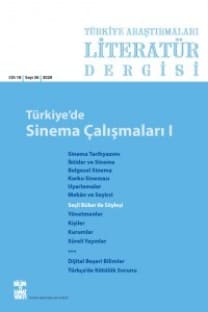Osmanlı ve Cumhuriyet Dönemi Kuran ve Tefsir Literatürüne Toplu Bir Bakış -Birincil Eserler ve Onlara Dair İncelemeler-
Osmanlı ve Cumhuriyet döneminde Kuranın anlaşılması, açıklanması ve yorumlanması hususunda kaynak niteliğinde kayda değer birincil literatür yanında, bilhassa son otuz beş yılda bunların tespit, tahlil ve değerlendirmesine yönelik zengin bir ikincil literatür oluşmuştur. Elinizdeki yazıda bu literatürün tasnifi yapılarak toplu bir resmi ortaya konulmaya çalışılmaktadır. Osmanlı dönemi literatüründe şekil, tür ve içerik olarak geleneksel ölçülere riayet edildiği, buna mukabil Cumhuriyet döneminde bu açılardan yeni deneme ve arayışların görüldüğü gözlemlenmektedir. Cumhuriyet dönemi, Kuran merkezli din tasavvurunun yaygınlaşması sebebiyle doğrudan Kuranla ilgili meâl ve tefsir türünden eserlerin, keza İlahiyat Fakültelerinin yaygınlaşmasıyla bu alana dair akademik araştırmaların yoğunluk ve etki açısından belirleyici olduğu bir dönem olarak da öncesinden farklılaşmaktadır. Söz konusu literatürün zenginliğine rağmen her iki dönemle alakalı envanter çalışmaları yanında, bunların tasnif ve değerlendirmesine yönelik çabaların yetersizliği dikkati çekmektedir.
An Overview of the Quran and Tafseer Literature in the Ottoman and Republican Periods -Primary Literature and Related Studies -
During the Ottoman and Republican periods, a remarkable primary literature devoted to the understanding, explanation and interpretation of the Quran emerged. Moreover, in the last thirty-five years, there was a surge in secondary literature aimed at studying, analyzing and evaluating these primary sources. In this study I tried to portray a holistic picture of this literature on the Quran and tafseer within a system of classification. I could say that the traditional standards were continued in the Ottoman period in terms of form, style and content. On the other hand, during the Republican period, we encounter new trials and pursuits. The republican era differentiates from the past in two striking aspects: First, the increase in academic studies as a result of the dissemination of theology faculties had an impact on the intensity of relevant literature; and second, thanks to the spread of Quran-oriented conception of religion, studies directly related to the Quran like meâls (synopsis of meaning) and tafseer (exegesis) works rose in number. It is striking that there is a lack of studies classifying and analyzing the related literature as well as inventory studies for both periods in spite of the wealth of the sources.
Keywords:
Quran meâl (synopsis of meaning), translation, tafseer (exegesis), hashiyya (glosses, supercommentaries).,
- ISSN: 1303-9369
- Başlangıç: 2003
- Yayıncı: Bilim ve Sanat Vakfı
Sayıdaki Diğer Makaleler
Ebussuûd Efendi’nin İrşâdü’l-Akli’s-Selîm ilâ Mezâya’l-Kitâbi’l-Kerîm’i
Osmanlılar’da el-Keşşâf ve Envâru’t-Tenzîl Hâşiyeleri
Osmanlı'da Huzur Dersleri Geleneği ve Literatürü
II. Meşrutiyet’ten Günümüze Kur’an Mealleri
İsmâil Hakkı Bursevî’nin Rûhu’l-beyân fî tefsîri’l-Kur’ân Adlı Tefsiri
Molla Gürânî’nin Ğâyetü’l-Emânî’si
Yazma İhlas Sûresi Tefsirleri Bibliyografyası
Osmanlı Dönemi Âyet Tefsirleri
Tefsir Alanında Yapılan Doktora Tezleri Üzerine Bir Değerlendirme
